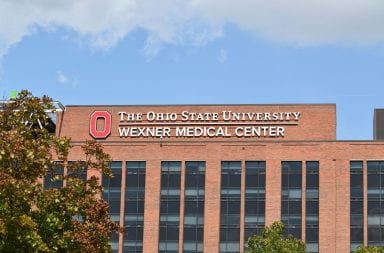International students are having a difficult time trying to speak English because they do not have many occasions to practice the language outside of their classes.
“Even though I talk pretty much with other international students, I don’t often speak with American students,” said Tetsuya Nakano, who is on a student visa from Japan. Nakona is enrolled in the American Language Program.
The ALP is designed to help students prepare for academic studies at an American university.
Tomoko IImori, another student in the ALP program, said many students usually talk in their native tongue after class. Therefore, there is no difference between living in the United States and living in the native country.
The problem is especially prominent among the Korean population, said Eun Young Choi, who is another student in the program.
“I feel like I am in Korea,” she said.
Korean students make up the majority of the students in the ALP program. In the intermediate class, which consists of five students, four are Korean. In many of the other classes, Koreans make up 50 percent of the class.
Those who are enrolled in the program may attend OSU afterwards. Others may choose another university.
Most ALP students are satisfied with the intensive English study at OSU and take advantage of the programs, but they seem to not have enough opportunities to speak with other Americans and to get involved in the university.
For instance, the only time they speak English is during their ALP class.
“I probably speak English only 20 to 30 percent a day,” said Iryoung Kim, an ALP student from Korea. “After 2:18, when the last class is done, I also finish using English.”
Another problem is trying to join university activities such as sports.
“I love soccer,” said Levent Konukoglu an ALP student from Turkey.
“I asked my teacher how I can join the club, but she didn’t know,” Konukoglu said. “I asked my host family, but nobody knows.”
Louis W. Holschuh, the director of the ALP and English as a Second Language programs, agrees that international students find it difficult to speak outside of class.
“I agree about the limited opportunities to speak with American students,” Holschuh said. “That has always been something I feel we need to expand. I am going to work with the instructional staff to brainstorm ideas.”
Students take classes that include English pronunciation, academic listening and speaking skill, American film, Test of English as a Foreign Language preparation class, American history class and drama class, Holschuh said.
Beyond that, students always have two activities each quarter and also two or three coffee hours. They also enjoy one or two additional activities such as skiing at Mad River Mountain, a trip to the symphony downtown, horseback riding and so on, he said.
However, the classes can only go so far.
“We can’t control the languages students use during the breaks between classes,” he said. “It is not an easy thing to do. Students need to be brave to go out there.”
Most of other international students agreed with the director.
“After class is our personal time. If students really want to apply what they have studied, they should always use English to talk to other people,” said Kee Soon Lim, a student from Malaysia in an advanced level.
In light of the situation inside of class, students want the program to expand more opportunities to utilize what they learned.
“I like the program and teachers,” Choi said. “If I can, I wish I have more conversation with teachers because I am more familiar with them than other Americans.”


